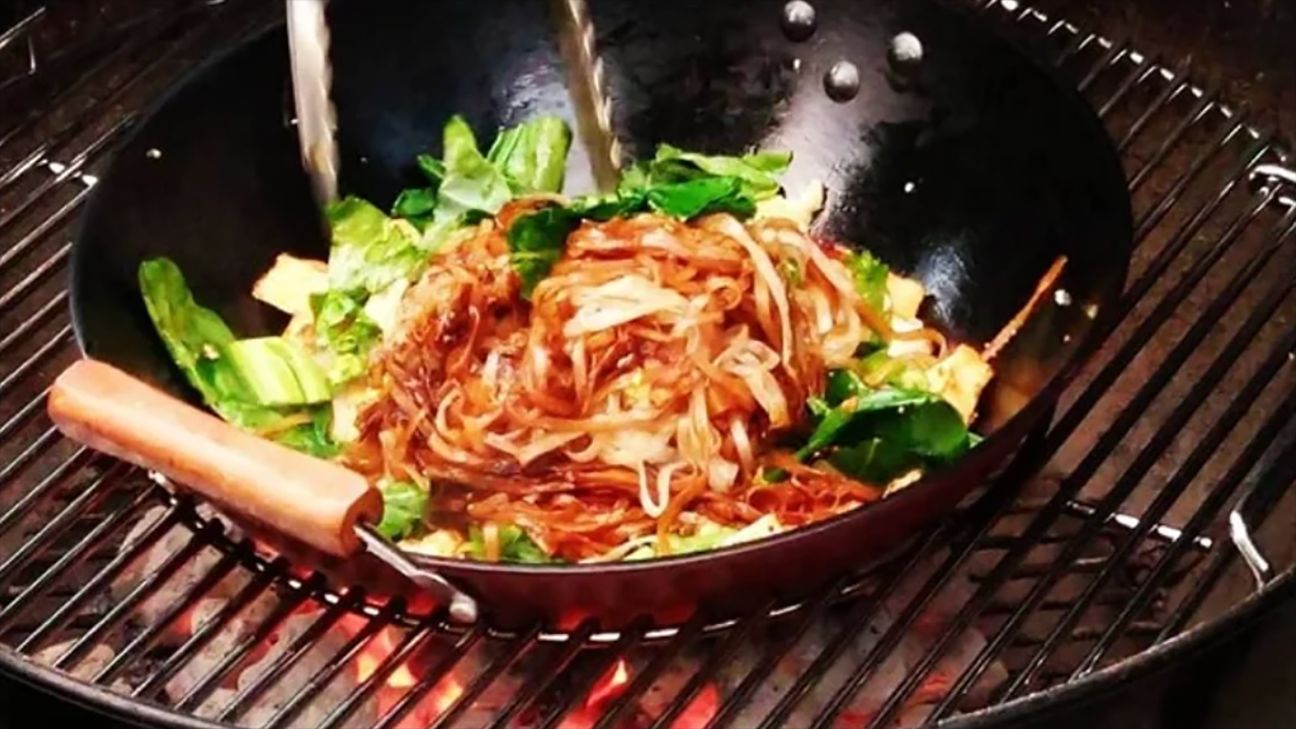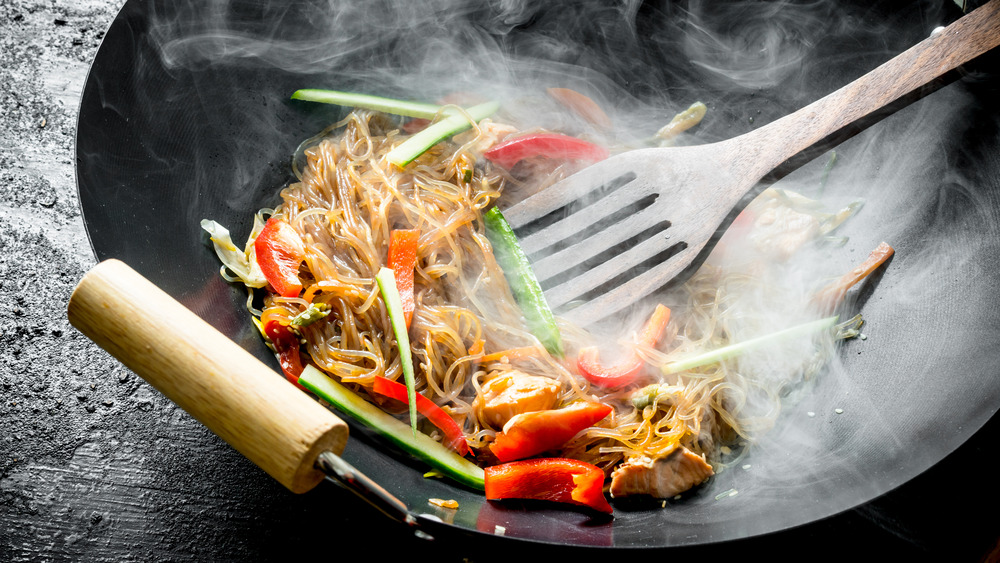The question on many culinary enthusiasts’ minds is, ‘how is a wok different from a frying pan’? Both are staple pieces of kitchen equipment, yet they serve distinct purposes. Grasping their differences is crucial for any budding chef or kitchen aficionado.

The Unique Design Features of Woks
Originating from China, the wok boasts a unique design. Its rounded bottom and high, sloping sides distinguish it from the flatter frying pan. This design is optimized for even heat distribution and quick cooking.
Exploring the Characteristics of Frying Pans
On the other hand, a frying pan is typically characterized by its flat bottom and shallow, flared sides, making it suitable for frying, searing, and browning foods.
Material Matters: Comparing Woks and Frying Pans
Both woks and frying pans come in various materials. However, traditional woks are often made of carbon steel, which requires seasoning, whereas frying pans are widely available in non-stick or stainless steel options.
The Versatile Uses of a Wok
A wok is remarkably versatile, ideal for stir-frying, steaming, and deep-frying. Its high sides also make it suitable for tossing food with minimal spillage, a technique often utilized in Asian cuisine.
The Diverse Functions of a Frying Pan
Conversely, a frying pan is perfect for tasks requiring a flat cooking surface, like frying eggs, pancakes, or searing steaks, providing even heat across the base.
Temperature Control: A Crucial Factor
Temperature control is easier with a wok, thanks to its rapid heat distribution. This is essential for quick cooking techniques like stir-frying. On the flip side, a frying pan ensures steady, even cooking at lower temperatures.
Health Considerations in Cooking Styles
When it comes to health, cooking with a wok often demands less oil, especially if you’re stir-frying. Alternatively, frying pans may require more oil to prevent sticking.
Cleaning and Maintenance Tips for Your Wok
Proper care extends the life of your cookware. Traditional woks need regular seasoning [How to use wok](https://howtocleancastiron.com/how-to-use-wok/). Check this guide on how to properly season your wok for its better use.
Maintaining Your Frying Pan: Key Tips
Frying pans, especially non-stick variants, demand gentle cleaning to preserve the coating. Its crucial to avoid metal utensils that may damage the surface.
Cultural Significance of Woks
The wok is more than a cooking tool; its a cultural symbol in Asian cooking, representing centuries of culinary evolution.
Tremendous Benefits of Using Both
Having both a wok and a frying pan in your kitchen arsenal means tapping into a world of culinary possibilities, each enhancing your cooking with its unique capabilities.
The Economic Aspect of Choosing Your Cookware
Deciding between a wok and a frying pan will also depend on your budget. While high-end models of each can be pricey, there are quality affordable options.
Technology Integration in Modern Cookware
Modern kitchen technology has seen innovations like electric woks and non-stick pans, improving usability and ease of cleaning.
Environmental Impact: Sustainable Choices
Opt for cookware with a longer life span to reduce environmental waste. Carbon steel woks, for instance, last decades with proper care.
Choosing the Right Tool for Your Culinary Needs
Ultimately, whether you choose a wok or a frying pan depends on your cooking style and the variety of dishes you wish to prepare.
Approved Recipes Benefiting from Wok and Pan
For delicious wok dishes, consider recipes that require dynamic heat and quick sears, such as Asian stir-fries. Frying pans excel at recipes needing even, sustained heat.
Terrific Tips for Beginners
If you’re new to using a wok or frying pan, start by mastering a few simple dishes to get comfortable with the handling and temperature control. Check out this [link](https://thewoksoflife.com/wok-guide/) for more insights on how to cook using a wok.
Conclusion: The Culinary Dance of the Wok and Frying Pan
Whether it’s the flavorful toss of a wok or the steady sear of a frying pan, understanding and utilizing these tools can elevate your culinary skills tremendously.

FAQs
Q: Can I use a frying pan instead of a wok?
A: While you can substitute, it may alter cooking time and flavor as the wok‘s design suits specific techniques.
Q: Why does food stick to my wok?
A: Proper seasoning is key. Refer to this [guide for maintenance](https://howtocleancastiron.com/why-is-my-wok-smoking/) for more helpful insights.
Q: Whats the best material for a frying pan?
A: It depends on your needs; non-stick for convenience, and stainless steel for browning and deglazing.
As an Amazon Associate, I earn from qualifying purchases.

